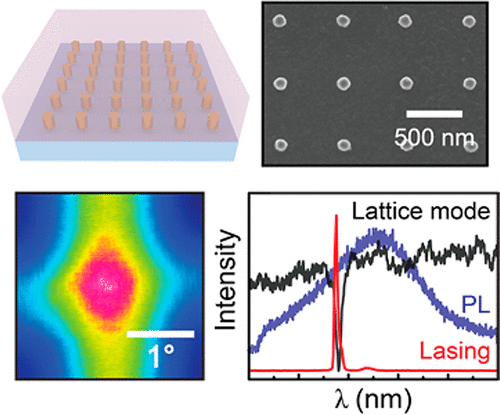当前位置:
X-MOL 学术
›
Chem. Rev.
›
论文详情
Our official English website, www.x-mol.net, welcomes your feedback! (Note: you will need to create a separate account there.)
Structural Engineering in Plasmon Nanolasers
Chemical Reviews ( IF 62.1 ) Pub Date : 2017-10-17 00:00:00 , DOI: 10.1021/acs.chemrev.7b00424 Danqing Wang , Weijia Wang , Michael P. Knudson , George C. Schatz , Teri W. Odom
Chemical Reviews ( IF 62.1 ) Pub Date : 2017-10-17 00:00:00 , DOI: 10.1021/acs.chemrev.7b00424 Danqing Wang , Weijia Wang , Michael P. Knudson , George C. Schatz , Teri W. Odom

|
This review focuses on structural engineering of lasers from the macroscale to the nanoscale, with an emphasis on plasmon nanolasers. Conventional lasers based on Fabry–Pérot cavities are limited in device size. In contrast, plasmon nanolasers can overcome the diffraction limit of light and incorporate unique structural designs to engineer cavity geometries and optical band structure. Since the spaser concept was introduced in 2003, tremendous progress in nanolasing has been made on architectures that exploit metal films and nanoparticles. Theoretical approaches in both frequency and time domains have inspired the development of plasmon nanolasers based on mode analysis and time-dependent lasing buildup. Plasmon nanolasers designed by band-structure engineering open prospects for manipulation of lasing characteristics such as directional emission, real-time tunable wavelengths, and controlled multimode lasing.
中文翻译:

等离子纳米激光器的结构工程
这篇综述着重于从宏观到纳米的激光器的结构工程,重点是等离激元纳米激光。基于法布里-珀罗腔的传统激光器的器件尺寸受到限制。相比之下,等离激元纳米激光器可以克服光的衍射极限,并采用独特的结构设计来设计腔体的几何形状和光学带结构。自2003年引入spaser概念以来,在利用金属膜和纳米颗粒的架构上,纳米激光技术取得了巨大进步。频域和时域的理论方法激发了基于模式分析和时间依赖性激光积累的等离激元纳米激光的发展。由能带结构工程设计的等离子纳米激光器为操纵激光特性(例如定向发射,
更新日期:2017-10-17
中文翻译:

等离子纳米激光器的结构工程
这篇综述着重于从宏观到纳米的激光器的结构工程,重点是等离激元纳米激光。基于法布里-珀罗腔的传统激光器的器件尺寸受到限制。相比之下,等离激元纳米激光器可以克服光的衍射极限,并采用独特的结构设计来设计腔体的几何形状和光学带结构。自2003年引入spaser概念以来,在利用金属膜和纳米颗粒的架构上,纳米激光技术取得了巨大进步。频域和时域的理论方法激发了基于模式分析和时间依赖性激光积累的等离激元纳米激光的发展。由能带结构工程设计的等离子纳米激光器为操纵激光特性(例如定向发射,


























 京公网安备 11010802027423号
京公网安备 11010802027423号